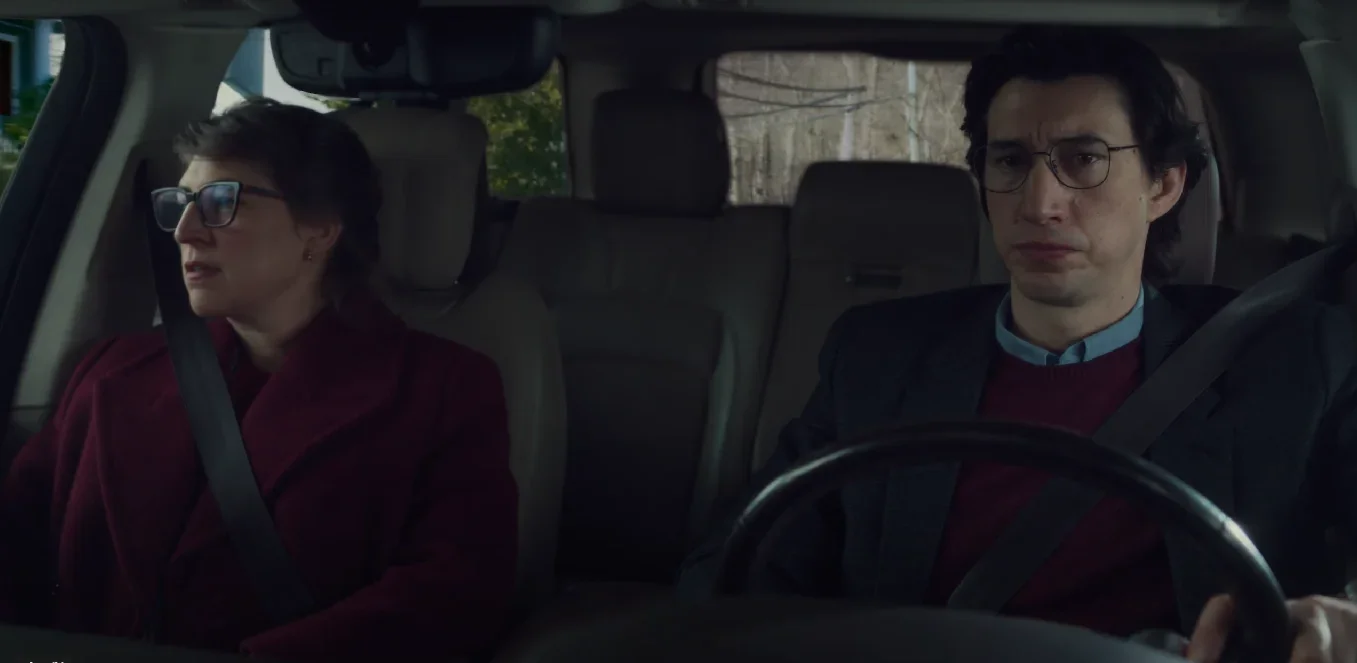‘Cherry’ REVIEW: High on style, low on substance
‘Cherry’ REVIEW: High on style, low on substance
Tom Holland signing up in the military on Cherry (2021).
This review contains spoilers for Cherry (2021).
Cherry follows an unnamed narrator (played by Tom Holland from Spider-Man), who comes back from a two-year service as an army medic and is now suffering from post-traumatic stress disorder. Holland eventually abuses his medications for suppressing the symptoms of his condition and ultimately graduates to heroin. The situation then spirals out of control when his toxic habit inadvertently influences his only love, Emily (Ciara Bravo), and ultimately starts robbing banks to finance their addiction.
Adapted from the semi-autobiographical novel of the same name, the screenplay from Angela Russo-Otstot and Jessica Goldberg divides the narrative into six chapters, all bearing different periods of the Narrator’s life. The Russos decides to implement a distinct genre for each chapter, an idea that seems appropriate on paper. First, it’s a coming-of-age romance; second, it’s a war film; third, it goes psychological drama; fourth, it’s a heist movie; and the last one is a prison film. It’s very ambitious stuff that sadly falls on itself because of how excessively stylish Cherry is.
Tom Holland breaks the fourth wall as he robs the bank.
From the opening minute, Cherry immediately showcases how hyper-stylized it is with tons of these different visual touches that continue to appear for the entirety of the film. Blood-red title cards are utilized to indicate the current chapter of the narrative. Narration is featured that sometimes goes breaking the fourth wall in the midst of action. Everyone in the background is obscured with digital blurs and shadows at two occasions; colors in the frame are drained and slowly come back at one point after characters take ecstasy. Aspect ratio changes are used in signalling a different atmosphere of the Narrator’s life.
Consequently, the style seemingly and always attempts to provoke an emotional reaction at the audiences with its showmanship. The editing attempts to make audiences laugh with throwaway jokes and elements of absurdism, and expects them to take the film seriously a moment later with dire scenarios. But it can only evoke confusion of whether or not we’re supposed to feel that way. For example, there’s one masturbatory fantasy sequence featuring Emily being seductive that is too weirdly placed to be funny. On paper, it makes sense because of the Narrator’s situation, but the parody-level editing and Bravo’s ludicrous line delivery cause it to be off-putting, to say the least.
Framed in the lower quadrant, Tom Holland visits a shrink.
However, this is not to say that style can’t be vital to the narrative as there are technical aspects that are still commendable in their efforts. At one point, the Narrator is having a one-on-one with a shrink, and cinematographer Newton Thomas Sigel plays with lower quadrant framing. As a result, the negative space conveys the former’s disconnect from the world as he struggles with PTSD. Additionally, there’s also one instance where the screen is split and the aspect ratio goes 3.00:1 to convey alertness.
Nevertheless, half of the aforementioned styles are used sparingly like the use of negative space. Some feel needless like Holland’s fourth-wall breaks, and the others are entirely absent after their first inclusion like the blurred background. In fact, some of these effects like the narration seem forced in as they come across as redundant when the exact same meaning is immediately conveyed in other means of the medium.
As a result of the style, the narrative itself is overshadowed. The genre-switching journey, together with the high number of annoying presentation choices, causes a mess that leaves many of its ideas underdeveloped and left in the gutter. They certainly involve war, post-traumatic stress disorder and drug addiction, but they can only scratch the surface of exploring these subjects as the film has too much on its plate that the only thing it can do is gloss them over. Sometimes, these “cool and showy” methods send a questionable vibe that the film seems proud of the characters’ behavior instead of condemning them, making it look like spectacle when it shouldn’t be.
Tom Holland recalls his life during a support group session in prison.
Sure, one could argue that the film’s hyper-active style is because of the Narrator’s unreliable lens as he retells his past in a very flashy and smuggy manner. A few names are carelessly recalled as “Whomever”, and one bank is simply renamed as “Sh*tty Bank” only by visual cues. On rare occasions, his inner observations result in those cutaway gags. But again, if that’s the case, it makes one question whether or not the Narrator actually finds guilt and self-awareness of what he has committed with his shoddy retelling. Although he specifically states these regrets in the inner monologues and there are sequences here that shed a light in the darkest pits of his sins, the aforementioned stylistic practices feel contradictory to his expressions, enveloping the Narrator with a blanket of obnoxious artifice over his character development.
It’s a shame, because there are hints of something great in Cherry, if only Russos' approach is mature enough to tackle this project. The best part of the film is truly the music. Henry Jackman’s composition proves strong on its own, echoing a feeling of melancholy in the Narrator’s journey. During the dialogue-free epilogue, Jackman’s score takes over, performing the heavy lifting in provoking a slight emotional resonance even if the catharsis doesn’t feel earned. What could’ve been a powerful sequence of healing and overcoming one’s demons becomes something that one wishes the film should have been when it’s not busy calling attention to itself.
Ciara Bravo and Tom Holland in bed.
In addition to smaller positives, Tom Holland and Ciara Bravo display some sliver of vulnerability, as their characters’ emotional facade continues to break. The Russos’ direction does beg them to follow suit with the attention-seeking qualities of their vision, which sometimes render their efforts unintentionally laughable. Nevertheless, when the film cuts out the standoffish nature for a brief moment and allows them to shine, they do their best in an otherwise misguided film.
In summary, Cherry is a messy, over-stylized buffet without a distinct theme. It possesses multitudes of presentation choices, but they never once feel consistent or vital to the story. Although Cherry is rarely dull in courtesy of the implemented styles drawing more attention to the techniques themselves than conveying why they are utilized in the first place, these varying visual approaches make it seem like the Russos are more inclined in boasting what they can do rather than telling the story in a more interesting and cohesive way. There’s no doubt that the Russos have ambition, because they actually try. If the Russos are able to restrain themselves from using an excessive collage of filmmaking and storytelling tricks, and pick a healthy set of them that will firmly establish a consistent tone, then Cherry would’ve been a solid film. However, without any restraint, the style of the film inadvertently tends towards sensationalizing these subjects instead of exploring them in a mature manner.
Cherry (2021) is now available on Apple TV Plus.


















